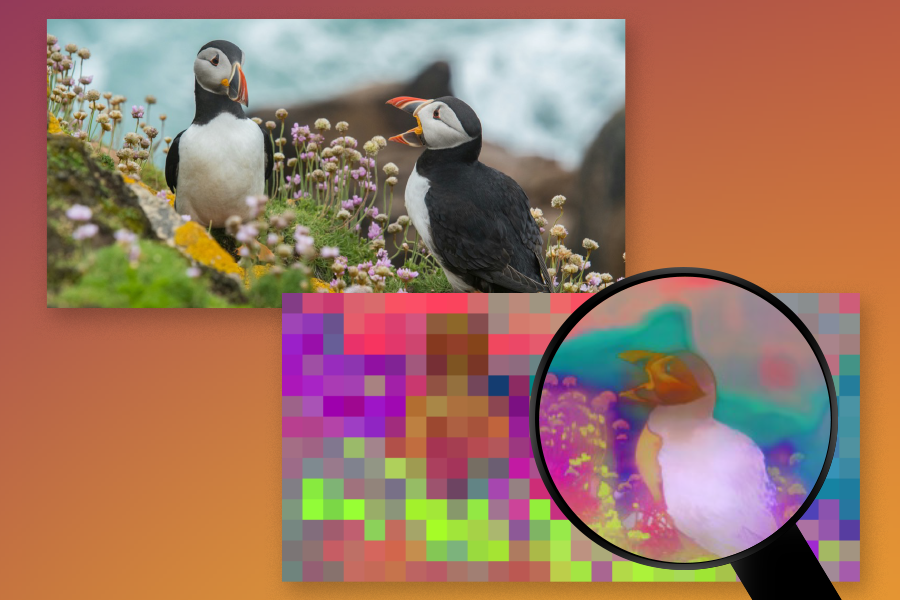…
Getimg.ai Review: The Best Free AI Image Generator & Editor?
The emergence of AI image generators has increased, with new AI image generators popping up left, right, and center. I love them because they let you instantly generate any type of image you can imagine without spending hours looking for the perfect photo on stock photo…
Scott Stavretis, CEO & Founding Director of Acquire BPO – Interview Series
Scott Stavretis is CEO and founding director of Acquire BPO. He is the primary decision- and policy-maker for the company, formulating and executing long-term strategies and collaborating with clients, employees, investors and other stakeholders. With many years of executive management experience, Scott has held a track…
When AI Poisons AI: The Risks of Building AI on AI-Generated Contents
As generative AI technology advances, there’s been a significant increase in AI-generated content. This content often fills the gap when data is scarce or diversifies the training material for AI models, sometimes without full recognition of its implications. While this expansion enriches the AI development landscape…
Is your outdated WAN putting the brakes on your business? What to watch for – CyberTalk

Peter Elmer, Check Point Office of the CTO and Mor Ahuvia, Check Point Office of the CTO.
By 2026, 70% of enterprises will have adopted SD-WAN. The shift towards cloud-based services and infrastructure is driving organizations to rethink their networking infrastructure. At present, your organization may be experiencing some of the following challenges:
Core WAN limitations
1. Latency issues. Latency refers to the time it takes for a data packet to travel from its source to its destination. Traditional WAN infrastructure often leads to extremely high latency, as all traffic, including internet-bound traffic, is routed through the headquarters or data center for security inspection. This can result in sluggish application performance, slow file transfers and reduced responsiveness, ultimately hindering business efficiency.
2. High MPLS costs. While MPLS offers security and reliability, it comes with a substantial price tag. These costs can become a financial burden, especially for organizations with multiple branches or remote locations. Nowadays, there are much more cost-effective alternatives to MPLS, such as broadband and 5G wireless internet connections.
3. Challenges with adding new branches. Traditional WAN architectures often lack the flexibility and speed needed to keep up with the addition of new branches. Adding new sites typically requires the physical installation of new private lines by the service provider, a time-consuming and complex process.
Further, integrating new sites into the existing WAN infrastructure can be challenging. This can make it difficult to accommodate expanded global operations and/or to execute mergers and acquisitions. Typically, adding new branches with WAN requires specialized hardware and manual configurations at each branch. This increases overhead for already burdened admin teams.
4. WAN as a single point of failure. Traditional WANs can easily become a single point of failure. If your Internet Service Provider (ISP) experiences an outage for any reason, your branch, office or remote site loses internet connectivity. This affects your ability to support customers, employees or automated operations. By enabling failover to a secondary or even tertiary link connecting to different service providers, you can ensure greater business resilience, regardless of circumstances.
Leveraging your current investment
Some security gateways enable you to implement SD-WAN easily, via a simple software update. This prevents you from having to install yet another point product. As a result, there’s no need for you to ‘rip-and-replace’ your current investment. This saves time, money and spares everyone from potential disruptions. For example, see Check Point’s SD-WAN solutions.
Improving WAN resilience
Here are a series of items to consider when evaluating your current security gateways for improved WAN resilience.
1. Preventing vs. detecting advanced threats. Ensure that your network is protected against the latest cyber threats, including zero-days, ransomware and DNS attacks. Check your solution’s catch rate to assess how well it can protect your business from known and unknown attacks, ideally using AI and machine learning technology.
2. Shorten the learning curve. Transitioning to new technology can be intimidating. By utilizing a familiar user interface, IT teams can quickly adapt to the new infrastructure, requiring fewer staff hours to learn and operate the network. Also, with an all-in-one solution, your team doesn’t have to operate and maintain a separate SD-WAN appliance.
3. Support for different types of connections. Shifting from traditional MPLS to broadband internet and 5G cellular connections can significantly reduce costs without compromising network performance. Check on which types of links your organization would need to stay connected, such as 5G wireless for rural, remote and even maritime sites. Consider embedded Wi-Fi if you’re looking for an all-in-one branch solution.
Get the full article here. Lastly, subscribe to the CyberTalk.org newsletter for timely insights, cutting-edge analyses and more, delivered straight to your inbox each week.
Fatal Fury: City of the Wolves Preview – Revving Up An Old Engine – Game Informer
An entire generation of fighting game fans have been born, hit puberty, graduated college, found a career, and possibly started a family in the time between the last Fatal Fury game and the upcoming City of the Wolves. The most recent entry, Garou: Mark of the Wolves, was released in 1999 for arcades (and 2001 for Dreamcast in the West), meaning the series has been dormant for over 25 years. Fatal Fury: City of the Wolves sees the series make its long-awaited return, and it already feels ready to stand alongside the big boys of the genre.
I had a chance to play over an hour of City of the Wolves at the SNK World Championship Finals last weekend, where I also spoke with producer Yasuyuki Oda. Fatal Fury has been an arcade mainstay since 1991 but hasn’t quite created the mainstream footprint of Street Fighter and Mortal Kombat. With this new entry, Oda says he believes the series’ penchant for more technical fighting, along with modern revisions to fan-favorite systems, will help it stand out in the now crowded space. Additionally, he also hopes these tenants help the game appeal to unfamiliar younger fighting game enthusiasts who may only know Fatal Fury by name.
[embedded content]
You eat with your eyes first, and City of the Wolves looks sharp thanks to a stylized art direction, with bold, heavy shadows that give the game a vibrant comic-book-like look reminiscent of Marvel vs Capcom 3. The returning fighters available in my demo were Rock Howard, Terry Bogard, Hotaru Futaba, and Tizoc. I also got to try a new character named Preecha. This bespectacled, bubble-gum-haired young woman is a quirky but brilliant scientist. Interestingly, she’s less interested in proving her fighting superiority and more interested in finding scientific explanations for how her rivals can perform seemingly impossible feats like shooting fire or energy out of their fists.
“She’s coming at it at a little bit of a strange point,” says Oda. “It’s almost like [how] a scientist would try to bring a little bit of reality into this world of special moves and telekinesis and all that stuff. So she wants to know exactly why is this possible, how is it possible, and how I can use this.”
Preecha is also a Muay Thai master and star pupil of series comic relief Joe Higashi. She devastates foes with furious, wind-powered kicks, including lobbing small cyclones as projectiles. I enjoyed using her the most out of the available roster, but each character offered a good time, whether I was German suplexing foes as the masked wrestler Tizoc or firing uppercut blasts as Rock. In addition to looking cool, the roster speaks to a broader audience, quite literally, thanks to a new English localization.

The REV system serves as City of the Wolves’ big new addition, giving players enhanced attacks to bolster their offense. REV Blows are powerful, near-unblockable supercharged attacks; REV Guard serves as an enhanced block; REV Arts are flashy cinematic combo attacks; and REV Accel is a speedy assault of sorts. Using these moves gradually fills the constantly draining REV meter, which replenishes when you land attacks. However, filling the meter sends the fighter into an overheated state, rendering REV moves unavailable until they “cool off” and the meter empties. Managing this meter creates an interesting pendulum swing that kept me from relying on REV moves too often, lest I lose them entirely and give my opponent a window to unleash their own REV-based assaults. Thankfully, the REV meter also doesn’t feel restrictive or like it discourages REV use overall due to how rapidly the meter drains.
The T.O.P system from Mark of the Wolves returns in expanded form as the S.P.G. (Selective Potential Gear) bar. At the start of each fight, players choose to place this bar at the front, middle, or end of the health meter. When your HP falls within the S.P.G. section, you gain benefits such as increased attack power, the ability to unleash Rev Blows, and health regen. Thus, the placement of the S.G.P. matters. Are you an aggressive player from the jump? Place the S.G.B bar at the front so you begin the match at your strongest. You could place it at the end to act as a powerful last stand. I enjoy the strategy the S.G.B. bar brings, both for myself and for knowing when to turn up the heat when my opponent’s vitality approaches theirs.
These systems complement a fighting system that already feels very fine-tuned. Playing matches against A.I. and other journalists was a challenging blast. I loved unleashing combination attacks while leveraging my REV meter. You can also execute Feints, special fake-out moves to trick your opponent into rushing in or backing off. Braking allows you to cancel out of combos in progress. Using returning mechanics, like Just Defend, in which you block at the last second for a quicker recovery, adds to the game’s enjoyable technical-based combat.
In a nod to recent fighting game trends, City of the Wolves features an optional, streamlined control scheme called Smart Style. This option simplifies the execution of dazzling special attacks by mapping them to a single button plus a directional input. For veterans, Arcade Style offers the default, more technical control setup, and it’s nice to see Fatal Fury continue the positive trend of inviting players of all skill levels to its world.
I’ve never been the most enthusiastic Fatal Fury fan in the world, but I’m very impressed with how thrilling City of the Wolves is, especially this far from release. SNK has a promising start, and while Oda wasn’t ready to divulge details on other modes and features, the core one-on-one fighting is in a strong place. Fighting game fans have feasted well the last few years, and Fatal Fury: City of the Wolves looks to offer another delicious serving in early 2025.
New algorithm unlocks high-resolution insights for computer vision

Imagine yourself glancing at a busy street for a few moments, then trying to sketch the scene you saw from memory. Most people could draw the rough positions of the major objects like cars, people, and crosswalks, but almost no one can draw every detail with pixel-perfect accuracy. The same is true for most modern computer vision algorithms: They are fantastic at capturing high-level details of a scene, but they lose fine-grained details as they process information.
Now, MIT researchers have created a system called “FeatUp” that lets algorithms capture all of the high- and low-level details of a scene at the same time — almost like Lasik eye surgery for computer vision.
When computers learn to “see” from looking at images and videos, they build up “ideas” of what’s in a scene through something called “features.” To create these features, deep networks and visual foundation models break down images into a grid of tiny squares and process these squares as a group to determine what’s going on in a photo. Each tiny square is usually made up of anywhere from 16 to 32 pixels, so the resolution of these algorithms is dramatically smaller than the images they work with. In trying to summarize and understand photos, algorithms lose a ton of pixel clarity.
The FeatUp algorithm can stop this loss of information and boost the resolution of any deep network without compromising on speed or quality. This allows researchers to quickly and easily improve the resolution of any new or existing algorithm. For example, imagine trying to interpret the predictions of a lung cancer detection algorithm with the goal of localizing the tumor. Applying FeatUp before interpreting the algorithm using a method like class activation maps (CAM) can yield a dramatically more detailed (16-32x) view of where the tumor might be located according to the model.
FeatUp not only helps practitioners understand their models, but also can improve a panoply of different tasks like object detection, semantic segmentation (assigning labels to pixels in an image with object labels), and depth estimation. It achieves this by providing more accurate, high-resolution features, which are crucial for building vision applications ranging from autonomous driving to medical imaging.
“The essence of all computer vision lies in these deep, intelligent features that emerge from the depths of deep learning architectures. The big challenge of modern algorithms is that they reduce large images to very small grids of ‘smart’ features, gaining intelligent insights but losing the finer details,” says Mark Hamilton, an MIT PhD student in electrical engineering and computer science, MIT Computer Science and Artificial Intelligence Laboratory (CSAIL) affiliate, and a co-lead author on a paper about the project. “FeatUp helps enable the best of both worlds: highly intelligent representations with the original image’s resolution. These high-resolution features significantly boost performance across a spectrum of computer vision tasks, from enhancing object detection and improving depth prediction to providing a deeper understanding of your network’s decision-making process through high-resolution analysis.”
Resolution renaissance
As these large AI models become more and more prevalent, there’s an increasing need to explain what they’re doing, what they’re looking at, and what they’re thinking.
But how exactly can FeatUp discover these fine-grained details? Curiously, the secret lies in wiggling and jiggling images.
In particular, FeatUp applies minor adjustments (like moving the image a few pixels to the left or right) and watches how an algorithm responds to these slight movements of the image. This results in hundreds of deep-feature maps that are all slightly different, which can be combined into a single crisp, high-resolution, set of deep features. “We imagine that some high-resolution features exist, and that when we wiggle them and blur them, they will match all of the original, lower-resolution features from the wiggled images. Our goal is to learn how to refine the low-resolution features into high-resolution features using this ‘game’ that lets us know how well we are doing,” says Hamilton. This methodology is analogous to how algorithms can create a 3D model from multiple 2D images by ensuring that the predicted 3D object matches all of the 2D photos used to create it. In FeatUp’s case, they predict a high-resolution feature map that’s consistent with all of the low-resolution feature maps formed by jittering the original image.
The team notes that standard tools available in PyTorch were insufficient for their needs, and introduced a new type of deep network layer in their quest for a speedy and efficient solution. Their custom layer, a special joint bilateral upsampling operation, was over 100 times more efficient than a naive implementation in PyTorch. The team also showed this new layer could improve a wide variety of different algorithms including semantic segmentation and depth prediction. This layer improved the network’s ability to process and understand high-resolution details, giving any algorithm that used it a substantial performance boost.
“Another application is something called small object retrieval, where our algorithm allows for precise localization of objects. For example, even in cluttered road scenes algorithms enriched with FeatUp can see tiny objects like traffic cones, reflectors, lights, and potholes where their low-resolution cousins fail. This demonstrates its capability to enhance coarse features into finely detailed signals,” says Stephanie Fu ’22, MNG ’23, a PhD student at the University of California at Berkeley and another co-lead author on the new FeatUp paper. “This is especially critical for time-sensitive tasks, like pinpointing a traffic sign on a cluttered expressway in a driverless car. This can not only improve the accuracy of such tasks by turning broad guesses into exact localizations, but might also make these systems more reliable, interpretable, and trustworthy.”
What next?
Regarding future aspirations, the team emphasizes FeatUp’s potential widespread adoption within the research community and beyond, akin to data augmentation practices. “The goal is to make this method a fundamental tool in deep learning, enriching models to perceive the world in greater detail without the computational inefficiency of traditional high-resolution processing,” says Fu.
“FeatUp represents a wonderful advance towards making visual representations really useful, by producing them at full image resolutions,” says Cornell University computer science professor Noah Snavely, who was not involved in the research. “Learned visual representations have become really good in the last few years, but they are almost always produced at very low resolution — you might put in a nice full-resolution photo, and get back a tiny, postage stamp-sized grid of features. That’s a problem if you want to use those features in applications that produce full-resolution outputs. FeatUp solves this problem in a creative way by combining classic ideas in super-resolution with modern learning approaches, leading to beautiful, high-resolution feature maps.”
“We hope this simple idea can have broad application. It provides high-resolution versions of image analytics that we’d thought before could only be low-resolution,” says senior author William T. Freeman, an MIT professor of electrical engineering and computer science professor and CSAIL member.
Lead authors Fu and Hamilton are accompanied by MIT PhD students Laura Brandt SM ’21 and Axel Feldmann SM ’21, as well as Zhoutong Zhang SM ’21, PhD ’22, all current or former affiliates of MIT CSAIL. Their research is supported, in part, by a National Science Foundation Graduate Research Fellowship, by the National Science Foundation and Office of the Director of National Intelligence, by the U.S. Air Force Research Laboratory, and by the U.S. Air Force Artificial Intelligence Accelerator. The group will present their work in May at the International Conference on Learning Representations.
First Chinese Flying Drone Taxis From EHang Already Available on Taobao – Technology Org
According to Reuters, Chinese drone manufacturer EHang Holdings has starter the sale of its EH216-S model flying taxi…
Five MIT faculty members take on Cancer Grand Challenges

Cancer Grand Challenges recently announced five winning teams for 2024, which included five researchers from MIT: Michael Birnbaum, Regina Barzilay, Brandon DeKosky, Seychelle Vos, and Ömer Yilmaz. Each team is made up of interdisciplinary cancer researchers from across the globe and will be awarded $25 million over five years.
Birnbaum, an associate professor in the Department of Biological Engineering, leads Team MATCHMAKERS and is joined by co-investigators Barzilay, the School of Engineering Distinguished Professor for AI and Health in the Department of Electrical Engineering and Computer Science and the AI faculty lead at the MIT Abdul Latif Jameel Clinic for Machine Learning in Health; and DeKosky, Phillip and Susan Ragon Career Development Professor of Chemical Engineering. All three are also affiliates of the Koch Institute for Integrative Cancer Research At MIT.
Team MATCHMAKERS will take advantage of recent advances in artificial intelligence to develop tools for personalized immunotherapies for cancer patients. Cancer immunotherapies, which recruit the patient’s own immune system against the disease, have transformed treatment for some cancers, but not for all types and not for all patients.
T cells are one target for immunotherapies because of their central role in the immune response. These immune cells use receptors on their surface to recognize protein fragments called antigens on cancer cells. Once T cells attach to cancer antigens, they mark them for destruction by the immune system. However, T cell receptors are exceptionally diverse within one person’s immune system and from person to person, making it difficult to predict how any one cancer patient will respond to an immunotherapy.
Team MATCHMAKERS will collect data on T cell receptors and the different antigens they target and build computer models to predict antigen recognition by different T cell receptors. The team’s overarching goal is to develop tools for predicting T cell recognition with simple clinical lab tests and designing antigen-specific immunotherapies. “If successful, what we learn on our team could help transform prediction of T cell receptor recognition from something that is only possible in a few sophisticated laboratories in the world, for a few people at a time, into a routine process,” says Birnbaum.
“The MATCHMAKERS project draws on MIT’s long tradition of developing cutting-edge artificial intelligence tools for the benefit of society,” comments Ryan Schoenfeld, CEO of The Mark Foundation for Cancer Research. “Their approach to optimizing immunotherapy for cancer and many other diseases is exemplary of the type of interdisciplinary research The Mark Foundation prioritizes supporting.” In addition to The Mark Foundation, the MATCHMAKERS team is funded by Cancer Research UK and the U.S. National Cancer Institute.
Vos, the Robert A. Swanson (1969) Career Development Professor of Life Sciences and HHMI Freeman Hrabowksi Scholar in the Department of Biology, will be a co-investigator on Team KOODAC. The KOODAC team will develop new treatments for solid tumors in children, using protein degradation strategies to target previously “undruggable” drivers of cancers. KOODAC is funded by Cancer Research UK, France’s Institut National Du Cancer, and KiKa (Children Cancer Free Foundation) through Cancer Grand Challenges.
As a co-investigator on team PROSPECT, Yilmaz, who is also a Koch Institute affiliate, will help address early-onset colorectal cancers, an emerging global problem among individuals younger than 50 years. The team seeks to elucidate pathways, risk factors, and molecules involved in the disease’s development. Team PROSPECT is supported by Cancer Research UK, the U.S. National Cancer Institute, the Bowelbabe Fund for Cancer Research UK, and France’s Institut National Du Cancer through Cancer Grand Challenges.
